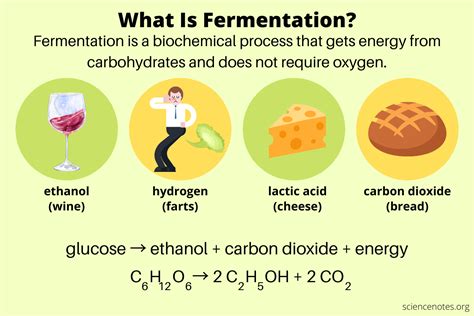The Invisible Dance: How Food and Microorganisms Shape Our World
Microorganisms are the microscopic beings that inhabit our world, often unseen but playing a crucial role in the grand scheme of life. When it comes to food, their influence is profound, affecting everything from production to consumption.
The Symphony of Food Production
Microorganisms are the unsung heroes of food production. They aid in fermentation, a process that imparts distinctive flavors and preserves foods. Examples include yogurt, cheese, and sauerkraut. Bacteria also play a vital role in nitrogen fixation, converting atmospheric nitrogen into a usable form for plant growth, thus boosting agricultural yields.
Guardians of Food Safety
While some microorganisms contribute to food preservation, others can pose a threat to our health. Foodborne pathogens can cause illness, ranging from mild discomfort to life-threatening conditions. Vigilance in food handling, preparation, and storage is crucial to prevent contamination.
The Gut Connection: A Thriving Microbiome
The human body is home to trillions of microorganisms, primarily in the digestive tract. This microbiome plays a vital role in metabolism, immunity, and overall well-being. A balanced microbiome supports a healthy digestive system and immune response. However, disruptions in this microbial ecosystem can lead to various health issues.

Technological Advancements in Food Microbiology
Scientific advancements have revolutionized food microbiology. Molecular techniques allow for rapid identification of microorganisms, enabling timely detection of pathogens and contaminants. Biopreservation utilizes microorganisms to enhance food safety and extend shelf life.
Strategies for Effective Food Microbiology Management
To ensure food safety and quality, effective strategies should be implemented:


-
Good Manufacturing Practices (GMPs): Adherence to hygiene and sanitation standards reduces the risk of contamination.
-
Hazard Analysis and Critical Control Points (HACCP): Identifying and controlling potential hazards throughout the food production chain minimizes safety risks.
-
Microbiological Testing: Regular testing monitors for the presence of pathogens and contaminants, ensuring compliance with safety standards.
Common Pitfalls to Avoid
In food microbiology, vigilance is key to preventing errors:
-
Inadequate cleaning and sanitization: Neglecting proper cleaning procedures can create a breeding ground for harmful microorganisms.
-
Cross-contamination: Mixing raw and cooked foods or unhygienic practices can transfer pathogens to safe foods.
-
Improper temperature control: Incorrect storage temperatures can allow pathogens to grow and multiply.
Frequently Asked Questions
-
What is the difference between bacteria and viruses? Bacteria are living organisms, while viruses are not. Bacteria can reproduce independently, while viruses require a host cell to replicate.
-
How can I prevent foodborne illness? Wash hands thoroughly, cook food to proper temperatures, avoid cross-contamination, and refrigerate perishable foods promptly.
-
What is the role of probiotics in gut health? Probiotics are beneficial bacteria that support a healthy microbiome by promoting digestion, immunity, and nutrient absorption.
Cautionary Tales with a Humorous Twist
-
The Yogurt Misadventure: A culinary enthusiast attempted to make homemade yogurt but accidentally used sour cream as a starter. The result: a putrid concoction that sent their taste buds on a wild adventure.
-
The Moldy Bread Encounter: An absent-minded baker forgot their bread in the oven overnight. Upon retrieving it the next morning, they were greeted by a vibrant green colony of mold—a cautionary tale about the importance of time and temperature control.
-
The Unfortunate Handshake: A chef preparing a gourmet meal extended an unwashed hand to a guest. Moments later, they realized they had just shared a handshake with their latest culinary experiment: a delectable but deadly concoction of salmonella and E. coli.
These humorous stories highlight the importance of food safety and remind us that microorganisms can have both beneficial and harmful effects on our food.
Conclusion
The realm of food and microorganisms is vast and complex. Understanding their interactions is essential for safeguarding our health, ensuring food quality, and unlocking the potential of food science. By embracing the power of microorganisms, we can create a sustainable and delicious food system for generations to come.

References
Centers for Disease Control and Prevention: Preventing Foodborne Illness
National Institute of Health: Gut Microbiome and Health
Tables
Table 1: Common Foodborne Pathogens and Symptoms
| Pathogen |
Symptoms |
| Salmonella |
Nausea, vomiting, diarrhea |
| E. coli |
Diarrhea, abdominal cramps, fever |
| Listeria |
Fever, muscle aches, nausea |
| Clostridium botulinum |
Paralysis, difficulty breathing |
| Vibrio |
Diarrhea, vomiting, abdominal pain |
Table 2: Beneficial Microorganisms in Food
| Microorganism |
Benefits |
| Lactobacillus |
Fermentation, improves digestion |
| Bifidobacterium |
Fermentation, supports immune system |
| Saccharomyces cerevisiae |
Bread making, brewing |
| Penicillium |
Cheese ripening, antibiotic production |
| Aspergillus |
Soy sauce production |
Table 3: Strategies for Effective Food Microbiology Management
| Strategy |
Description |
| Good Manufacturing Practices (GMPs) |
Hygiene, sanitation, and quality control |
| Hazard Analysis and Critical Control Points (HACCP) |
Identification and control of hazards |
| Microbiological Testing |
Monitoring for pathogens and contaminants |
| Education and Training |
Training staff on food safety practices |
| Research and Development |
Exploring new technologies and interventions |
